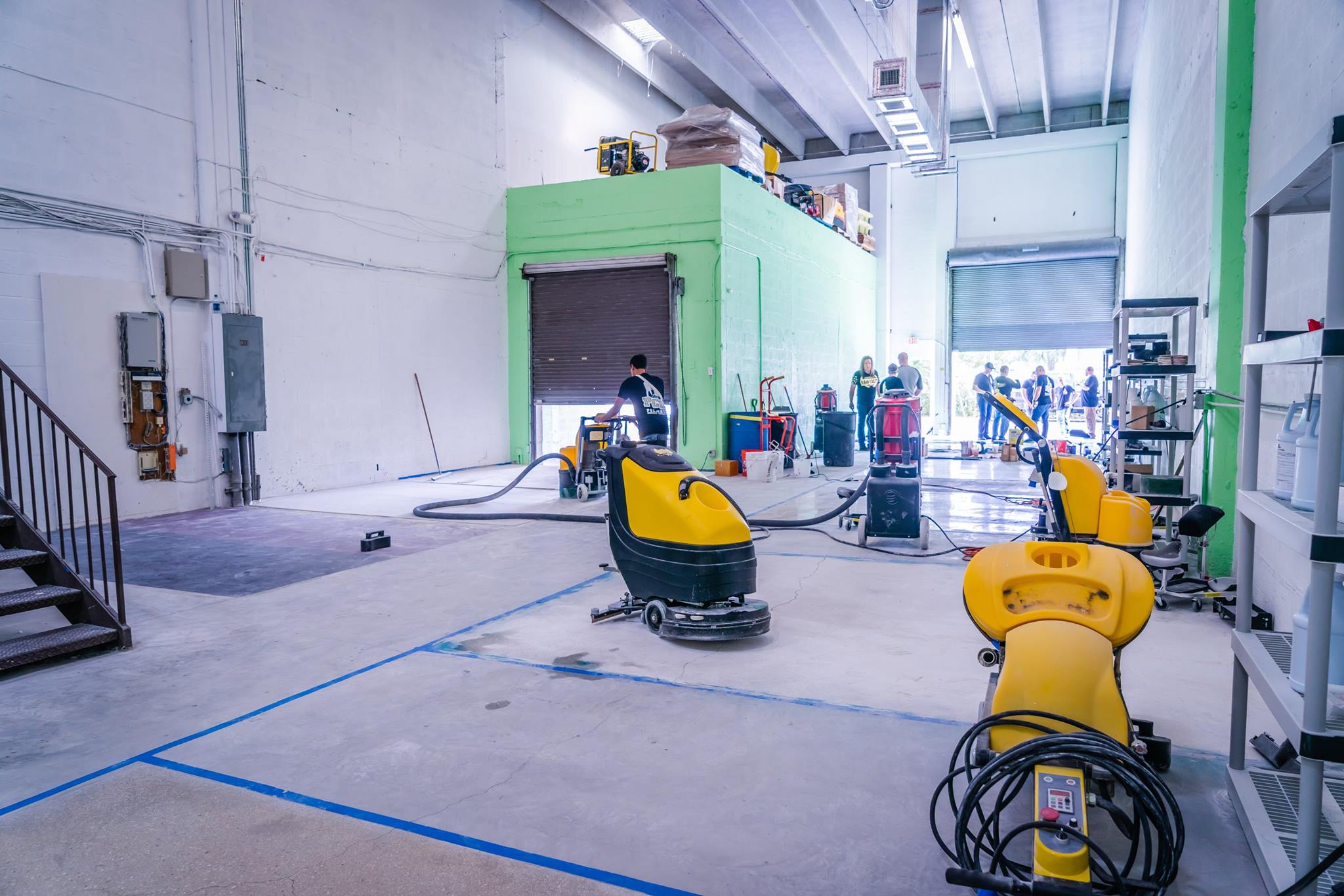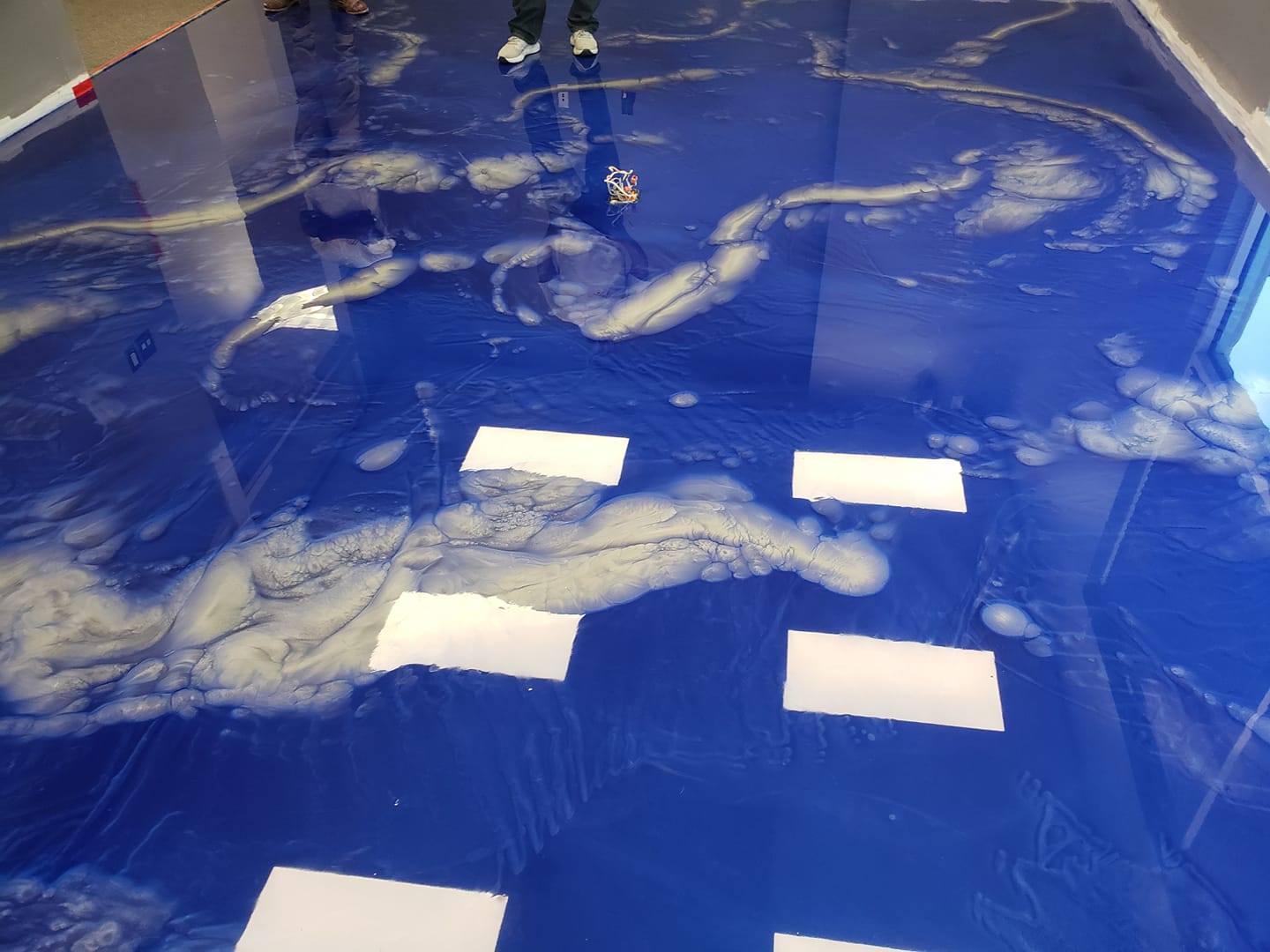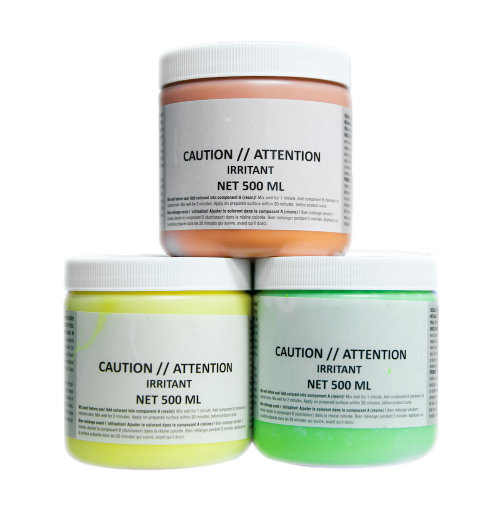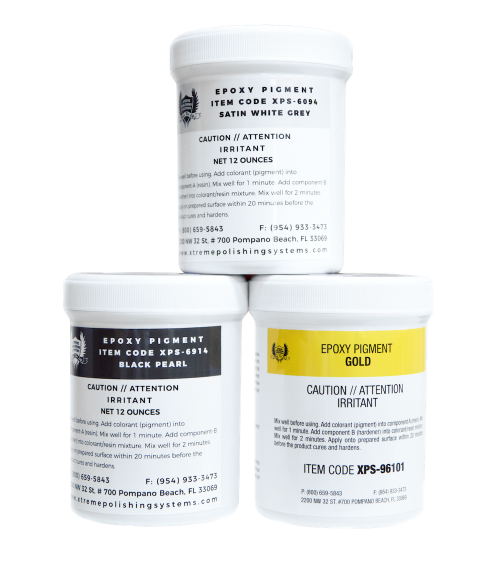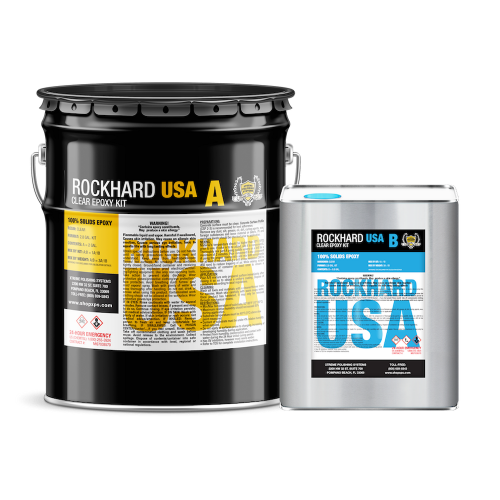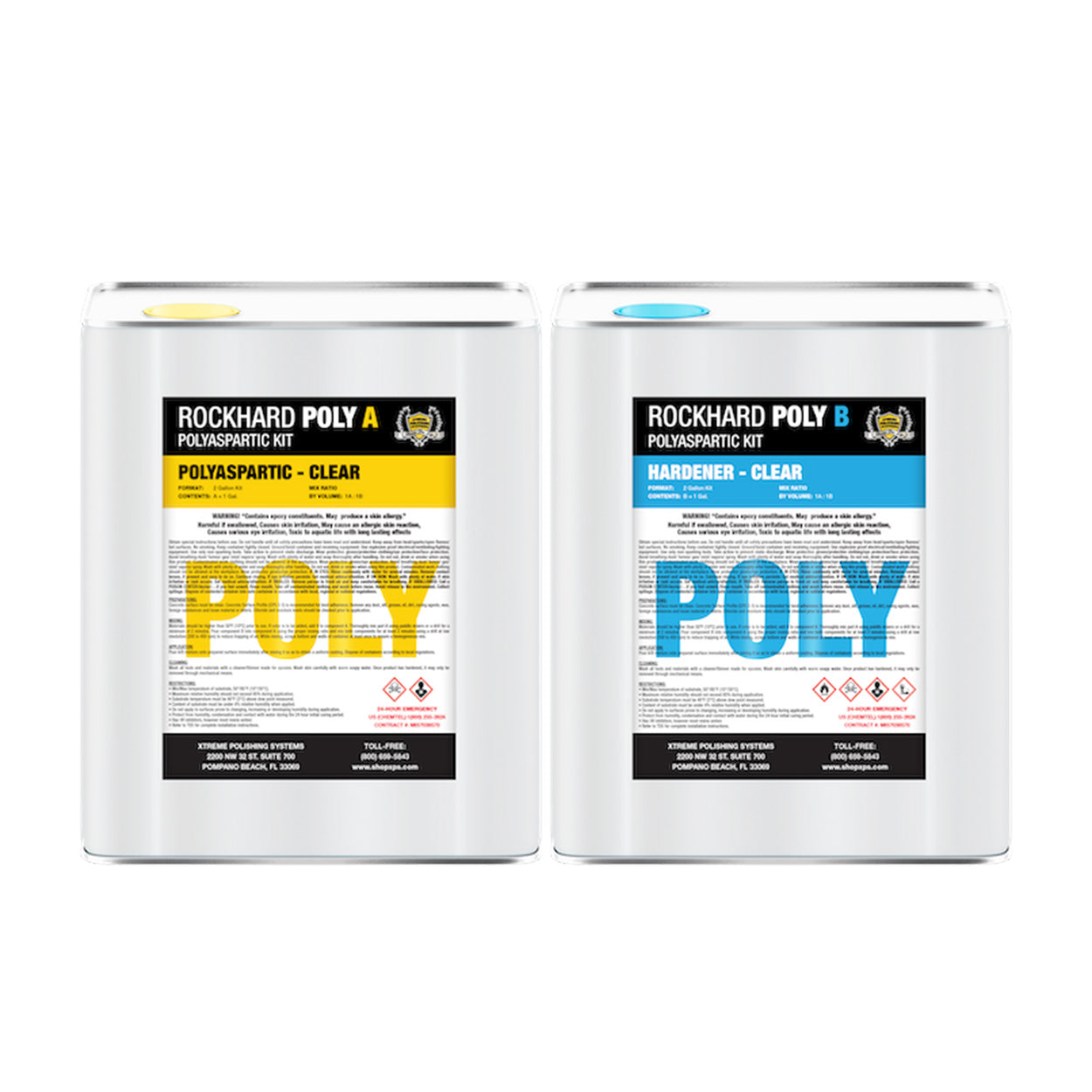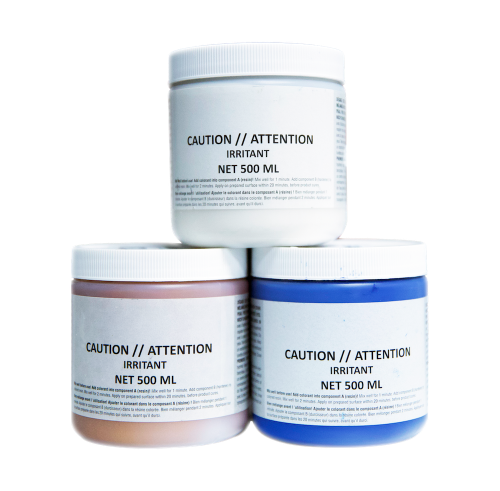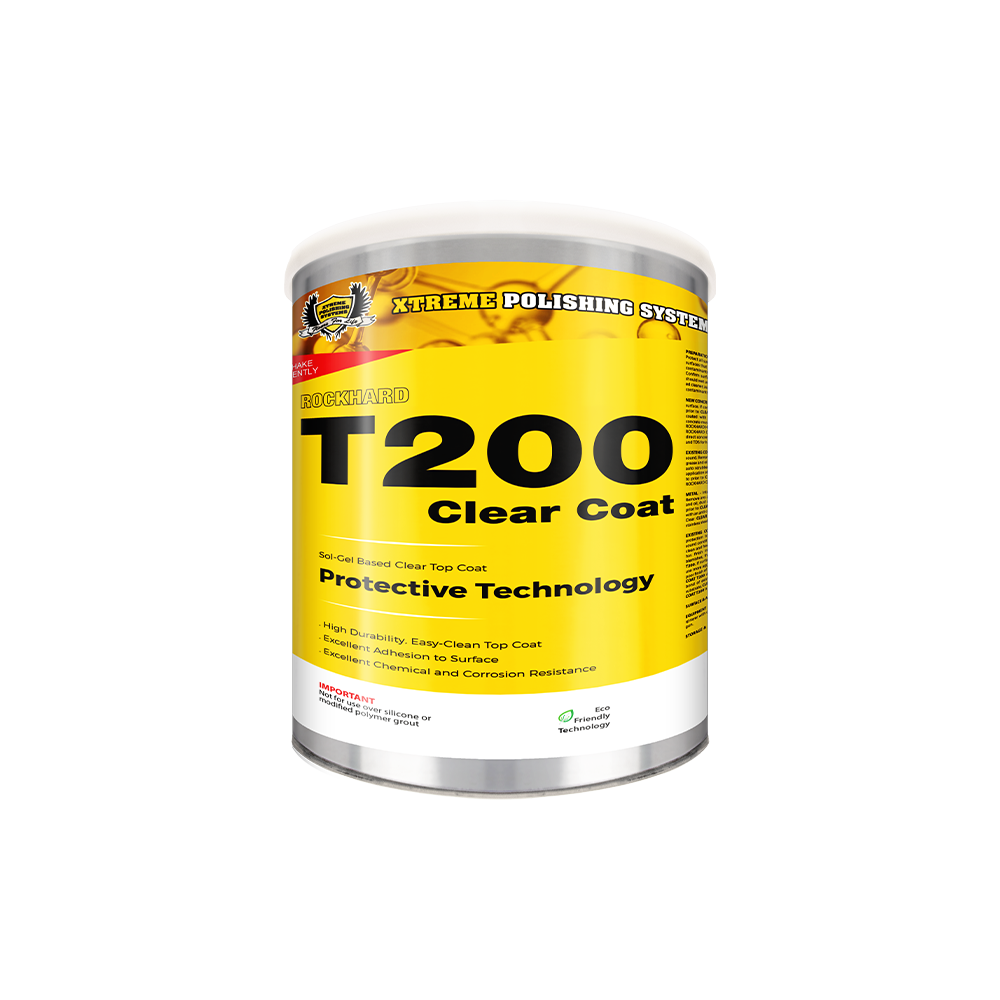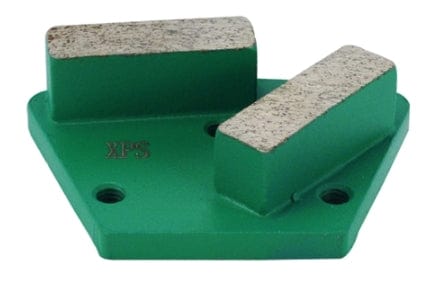- Taking Precautionary Measures: Before starting the acid staining process on the floors, we remove all the baseboard and trim work to avoid damage. The wall and the exposed lower cabinets are covered with at least 12-inch masking paper.
- Preparing The Concrete Surface: Floors need to be washed with water to confirm that they are not sealed. Grease and oil spots are removed by using sandpaper/floor sanders, floor grinders or chemical strippers. Our experts will usually tend to avoid any uneven coloration or imperfections as they may subtract from the exclusive finish of the floor.
- Mixing The Acid Stain: Acid stains are the blend of water, acid-soluble metallic salts and hydrochloric acid (the main ingredient). All the compounds penetrate into the surface and react with calcium hydroxide in the concrete to produce distinctive patterns and finish.
- Applying The Acid Stains: Next, we apply the stains using pump sprayers. The spray wand is kept almost 18 inches above the ground and is used in random patterns to spread evenly across the floor. It is made sure that no puddles are generated. At least, two coats of acid sprays are applied; the second coat is applied after a gap of about an hour to let the floors dry completely after the first coat. The subsequent coats are applied until the desired color is reached.
- Neutralizing The Acid Stains: A mixture of water and ammonia in the proportion of 4:1 is applied to neutralize the hydrochloric acid stains. We make sure to thoroughly clean the floors using water to further ensure that no acidic residue is left. The extra water is vacuumed at the end and floors are left overnight to dry.
- Sealing The Floors: The next step involves using solvent based acrylic sealer to seal the stained floors as it penetrates into the concrete. The floors are sealed to avoid everyday wear and tear and air bubbling as well as to improve the color of the stain effects. Using pump sprayers to seal the floors helps guarantee the achievement of a nice consistent finish. This step (again) requires two coats: first with approximately 15% solid acrylic and second with 20-25% solid acrylic.
- NEW
-
-
-
-
- Air Scrubbers
- Angle Grinders
- Grinding & Polishing Machines
- Burnishing & Buffing Machines
- Dust Collectors & Vacuums
- Filter Replacements & Vac Bags
- Dust Shrouds
- Edge Grinding Machines
- Floor Scrubber Machines
- Floor Removal Machines
- Joint Cutters
- Mixing Stations
- Scarifiers & Shavers
- Shot Blasting Machines
- Machine Parts
- Generators
-
-
-
- Flakes & Quartz
- Equipment Packages
- Venetian Plaster
- By Vendor
- Sale
-
-
-
-
- Financing
- Contact
- Locations


